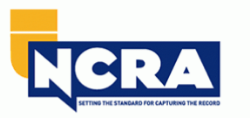Trial Presentation Trusted Professionals for Legal Visuals and Graphics
Trial Presentation Trusted Professionals for Legal Visuals and Graphics
Blog Article
Mastering Trial Discussion: Tips for Engaging and Persuasive Court Room Strategies
In the realm of test presentation, the capacity to engage and encourage is paramount. The obstacle lies in perfectly integrating them into a natural discussion. What techniques can truly elevate a test discussion from common to outstanding?
Understanding Your Audience
To successfully understand trial discussion, it is essential to comprehend your target market. In the court room, your target market largely consists of jurors, the judge, and rival counsel. Each group has unique point of views, experiences, and predispositions that can affect their function of your debates. Jurors, as an example, are entrusted with analyzing proof and establishing facts based upon their personal beliefs and values. Recognizing their demographics, backgrounds, and possible predispositions can help customize your presentation to resonate with them effectively.

An understanding of the judge's preferences and court etiquette is similarly vital, as it can influence the circulation of your presentation. Judges might focus on brevity and clarity, so presenting your case in a simple way can boost your trustworthiness. Additionally, identifying the opposite advise's methods can aid in preparing counterarguments that effectively resolve their factors.
Inevitably, comprehending your audience permits you to involve them much more effectively, cultivating link and persuasion throughout the trial (trial presentation). By leveraging insights concerning their motivations and expectations, you can develop a compelling presentation that reverberates and inevitably affects the end result of the case. This foundational expertise is crucial for any type of attorney aiming to achieve success in the court room
Crafting an Engaging Story
A well-crafted story works as the foundation of an efficient test presentation, leading the audience via the complexities of the situation. This story should be structured to engage jurors mentally and intellectually, making the truths relatable and easy to understand. By weaving together the components of the case-- such as the timeline, key events, and pivotal statements-- lawyers can produce a systematic storyline that resonates with jurors.
To accomplish this, it is important to determine the main motifs that will drive the story. Attorneys need to focus on the inspirations and goals of the events involved, highlighting the human elements of the situation (trial presentation). This method not only preserves juror passion however likewise promotes empathy, leading them to attach directly with the story
Each sector of the narrative should develop towards a compelling climax, finishing in a persuasive conclusion that strengthens the case's core message. Eventually, a solid narrative not just clears up the concerns at hand however additionally develops an enduring impression that can affect the result of the trial.
Making Use Of Visual Aids Efficiently
How can visual help improve the effectiveness of a trial presentation? Aesthetic aids act as powerful devices that can significantly boost juror understanding and retention of intricate information - trial presentation. When used attentively, they can clarify bottom lines, illustrate partnerships, and emphasize vital evidence that sustains the case story
Reliable visual help include graphes, charts, timelines, and photos, which can simplify complex data and provide context. As an example, a timeline can succinctly communicate the sequence of occasions, while a graph can highlight analytical information in an aesthetically interesting manner. The calculated usage of multimedia discussions can additionally enhance engagement and keep juror interest check here throughout the test.
Additionally, visual help can help to stimulate psychological responses, enhancing the human components of a situation. By offering photographs or video clips relevant to the case, attorneys can develop a more compelling and relatable story. It is vital to make certain that visual aids are properly created and not excessively intricate, as this can lead to confusion rather than clarity.
Involving Body Movement Techniques
Aesthetic help are not the only tools that can enhance the effectiveness of a trial presentation; engaging body movement methods also play a crucial duty in recording juror attention and communicating self-confidence. A presenter's nonverbal hints can significantly influence jurors' assumptions and responses, making it vital to understand these methods.

Furthermore, differing your singing tone and rate can boost your storytelling, making it more engaging. Stopping strategically allows jurors to soak up crucial info and signifies the relevance of what you are saying. Moving actively within the courtroom can assist strengthen your factors, gave it does not distract from your message.
Integrating these body language techniques will not just boost your courtroom visibility yet additionally promote a more influential link with jurors, ultimately adding to the success of your test discussion.
Practicing for Effect
Effective test discussions hinge not only on the content but also on the distribution, making technique vital for effect. The importance of wedding rehearsal can not be overemphasized; it allows attorneys to improve their disagreements and establish a commanding visibility in the court room. Involving in deliberate technique assists attorneys to identify their staminas and weak points, find more information allowing them to readjust their pacing, tone, and body movement as necessary.
To practice for effect, replicate trial conditions as carefully as feasible. This includes utilizing aesthetic help, practicing before associates, and soliciting constructive responses. Recording practice can likewise offer useful insights into delivery style and target market engagement. Concentrate on clearness in speech, making sure that intricate legal principles are interacted properly to the jury.

Conclusion
Mastering test discussion involves a diverse approach that integrates target market understanding, narrative advancement, aesthetic aids, and body language. These components work synergistically to produce a persuasive court room experience. By effectively engaging jurors with clear narration and impactful visuals, and by utilizing certain body language, trial advocates can considerably boost their arguments. Extensive technique in simulated settings even more strengthens these methods, making sure that each presentation resonates and leaves a long lasting impact on the court.
Report this page